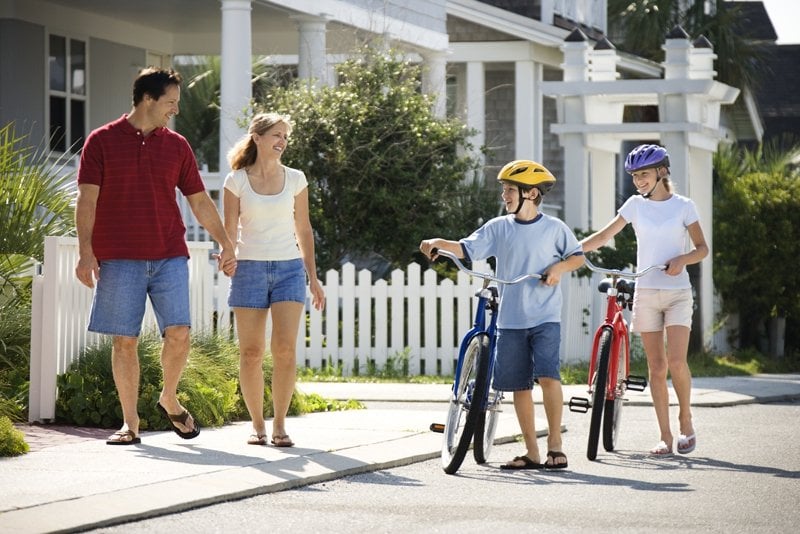As Americans place increasingly greater value on homes in locations that don’t require a daily commute, Walk Score’s platform for measuring the “walkability” of different communities is providing to be an incredibly useful tool for prospective buyers.

Family of four walking together on sidewalk with bicycles.
Walk Score is a nationwide platform that provides free access to its walkability index, which assigns a numerical score to any address in the U.S., Canada and Australia.
Walk Score, which is based in Seattle, has been around for a while. It was founded in 2007 before being bought by the online real estate brokerage Redfin in 2014. It’s walkability scores are a very useful metric for buyers and renters looking for a property in an area close to shops, restaurants and other services.
The company stresses that walkability is an important factor for everyone, and offers the following statistics as proof of that:
Neighborhoods are given a score of between 0 to 100 that measures their walkability. It works by using data from Google, Education.com, Open Street Map, Localese and the U.S. Census Bureau. It also factors into the equation new places and services added by its user community. The company’s methodology has been validated by leading academic researchers, it claims.

Here are the 10 cities with the most walkable neighborhoods in the U.S. in 2017, according to Walk Score:
This trend is not meant only for urban environments -- the suburbs are getting on board as well. At the 2016 Urban Land Institute (ULI) Fall Meeting in Dallas, panelists agreed that the American suburbs are evolving into more walkable, sustainable places that rival urban locations. The speakers agreed that the suburbs will increasingly look more like urban centers in the decades to come.